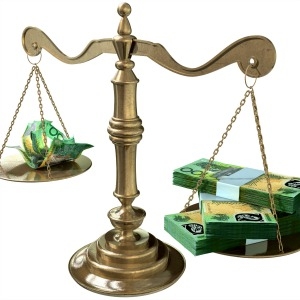|
Ten Things you should know about Downsizer contributions
Downsizer contributions are legislated under Section 292‑102 of ITAA 1997, access to this new type of personal super contribution is available from 1 July 2018. This legislation was introduced due to pressure on housing affordability in Australia. It gives older Australians an opportunity to transfer money into super after reaching age 65 without an overly complex set of rules.
There are no specific requirements about who must actually make the contribution for that individual, although the individual must be the one who makes the choice to treat a contribution as a downsizer contribution as long as certain conditions are met. The downsizer contribution is not a non-concessional contribution, however , the downsizer cannot be claimed as a personal income tax deduction. Downsizer contributions were introduced for two main reasons: a) Current contribution restrictions (such as work test and age) prevent older Australians from making contributions into superannuation. Superannuation providers can accept only employer contributions and member contributions in respect of a member who are over 65 years provided the member satisfy a work test – they must work at least 40 hours in a consecutive 30 day period. Downsizer contribution has no age restriction or work restrictions. b) Being unable to invest the proceeds of selling their home into superannuation and earn tax free income, discourages some older people from downsizing homes that no longer meet their needs. This means many larger family homes sit occupied by older singles or couples.
Below are 10 things which you must know about Downsizer contributions:
1. Age of member who is Contributing You must be 65 years or older at the time of making a downsizer contribution, there is no upper age limit for making downsizer contributions.
2. Timing of Sale of Property The contribution amount is from the proceeds of selling your home (exchange date) must be entered into on or after 1 July 2018. You can only make downsizing contributions for the sale of one home. You can't access it again for the sale of a second home.
3. Type of Property
The home sold (including the land it is built upon) must be eligible for principle place of residence exemption and located within Australia and is not a caravan, houseboat or other mobile home and must be owned for at least 10 years. The member must have an ownership interest in the home. Where a spouse who held an ownership interest dies, the surviving spouse can count the period of ownership of their deceased spouse (including the period the dwelling is held by the trustee of the deceased estate) towards the 10 year ownership test. There may have been a change in ownership between two spouses over the 10 year period that preceded the sale of dwelling, for example relationship breakdown or death of a spouse. Provided that either of the spouses held an ownership interest in the dwelling at all times during the period, downsizer contributions can be made in respect of the person who held the ownership interest just before disposal and in respect of another person who is their spouse at that time If there is a period when land is vacant due to a dwelling having been lost or destroyed or knocked down and a dwelling has been rebuilt or is underway, this vacancy does not stop the 10 year ownership condition from being met. Also, a vacant block which someone has bought and then built a dwelling on and lived in as their main residence may meet the 10 year ownership condition
4. Principal Place of Residence CGT exemption
In determining whether the CGT main residence exemption applies it is the characteristics of the individual in respect of whom the downsizer contribution has been made that are relevant. For capital gains tax (CGT) purposes, broadly, a capital gain or loss made on a dwelling that is an individual’s main residence is disregarded as per ITAA 1997 (subsection 118-110(1)) for the whole or part of the 10 year period. In situations where the title of the property was held in one spouse name, the requirements will be satisfied where the individual satisfies all the requirements to have qualified for a CGT main residence exemption but for the fact that it was their spouse who held the ownership interest in the dwelling (rather than the individual). The main residence exemption will also apply to adjacent land such as a garden, up to 2 hectares (section 118-120 of ITAA 1997). The rules apply to individuals with an ownership interest, meaning a legal or equitable interest or right or licence to occupy a dwelling (section 118-130 of ITAA 1997).
5. Ownership Requirement - 10 year rule The home must have been owned for at least 10 years by the contributor, their spouse, or former spouse. This allows the home to be held either solely, jointly, or as tenants in common. The rules also allows for the death of one spouse during the 10-year ownership period. The home will still qualify even if a dwelling was used as principal place of residence for part of an individual’s ownership period, however, the capital gain or loss is only disregarded for the period it was their main residence (section 118-185). There could be absences from the main residence such as working overseas etc. Also it does not matter if the house was earning rental income for a period of absence (6 year rule).
ADVERTISEMENT
Do you want to try Australia's leading SMSF Auditing Tool? - Audit 5 Funds for FREE
|
| Seminar : Let us show you... How to reduce SMSF Audit time in half! - 6 CPD hours in SMSF Audit |
|
Venue : Suite 3.04, Level 3, 29-31 Solent Circuit Baulkham Hills NSW 2153 |
|
Date : 24th May 2018 - 14th June 2018 |
|
Venue: Melbourne Stamford Plaza Hotel - City Date: 16th August 2018 Venue: Brisbane Stamford Plaza - City Date: 30th August 2018
Timings : 09:30 am to 03:30 pm |
|
Cost: The fee for seminar is $165 Incl. GST and is tax deductible(Plus Travel). Includes 10 audits worth $187 Incl. GST |
Let us show you...
How to reduce SMSF Audit time in half!
Do more with less ...
Australia’s first online SMSF Audit Software – Fully Automated Online SMSF Auditing Software
OVER 74,000 funds audited using the system.
Green Chit given by Professional body reviewers - Meet and Exceed your Professional requirements.
Proposed Agenda
09.00 AM Registration - Arrival Tea and Coffee
09.30 AM Introduction to Audit Online on SMSF Audit Software and Website integration
11.00 AM Tea/Coffee Break
11:30 AM Audit of SMSF under the new regine of Transfer Balance Cap | Contributions & Total Superannuation Balance | CGT Relief
01:00 PM Lunch and Group Discussion on Audit of funds with LRBA - Loan from related party - how repayment of Loan will be considered
02.00 PM How to complete an audit in half the time
4.00 PM Workshop Closed
Introduction/Overview
SMSF Auditors spend too much time in financial audit and completing manual audit working papers, our online software does most of this work automatically & saves half your time as compared to traditional auditing methods.
It checks closing share prices, dividends received from ASX and all mundane tasks of signing, scanning & mailing of audit report, Mgt. letter, engagement letter, Invoice & contravention reports etc. are automated with one click of a mouse. Embrace an efficient framework for high quality audits and conduct audits on a flawless workflow Management system.
Achieve peace of mind & confidence of knowing that you are using a completely up-to-date online checklist and cloud process to deliver a robust, hassle free top quality SMSF audit. Improve communication with accountants & trustees. Manage 20 or 2000 audits by streamlining workflow from our smart Audit Manager & establish seamless communication between all parties. Our online SMSF audit system is the only tool which can deliver reliability, speed and volume and ultimately profits for your business at a fraction of the cost.
Benefits/learning outcomes
Audit from anywhere, anytime from any device on your own website or by integrating with ours. Increase audit effectiveness, add value, reduce audit risk, drive SMSF compliance, revolutionise your business.
Included in the fee is an account to audit 10 SMSF on the online platform worth $187 and Lunch. Those auditors who are already using the online software will benefit by learning new shortcuts and other advanced features of the online software.
Recommended For
All SMSF ASIC approved auditors.
Session Notes
CPD Hours
2 Hours CPD in Superannuaiton and 4 Hours CPD on auditing SMSF's Total 6 CPD hours under self assessment method under RG 243.88 - 90 and SISA 128Q and SISR 9.04
RG 243.89 You will need to complete 120 hours of CPD over each three-year period, which must include 30 hours of development on superannuation and at least 8 hours of development on auditing SMSFs.
SISR 9A.04 (3) (b) be development that could reasonably be expected to enhance an approved SMSF auditor's technical skills or professional service delivery.
Attendee Requirements
Attendees may bring their own Laptops / Ipads for a better understanding - although some attendees may get more from the workshop by looking at the facilitators screen
Speaker
Manoj Abichandani
Manoj has worked in SMSF since 1988 and is SMSF Specialist (UNSW). He was providing high level advisory services to over 600 funds in his own 3 partner CPA tax practice for 19 years and has written this online software. He currently works as SMSF Technical Support Team Leader at www.trustdeed.com.au
He has hands on knowledge on what happens in a tax practice on high level of SMSF practical issues.

 Downsizing home implies that a person is moving to a smaller home. To make a downsizer contribution to super, there’s actually no requirement for a person to purchase a smaller home than the one sold, in fact, there’s no requirement to even replace their home once sold.
Downsizing home implies that a person is moving to a smaller home. To make a downsizer contribution to super, there’s actually no requirement for a person to purchase a smaller home than the one sold, in fact, there’s no requirement to even replace their home once sold.  Downsizer contributions can be made in respect of an individual if they or their spouse held an ownership interest in the dwelling, whether that ownership interest was held solely, jointly or as tenants in common.
Downsizer contributions can be made in respect of an individual if they or their spouse held an ownership interest in the dwelling, whether that ownership interest was held solely, jointly or as tenants in common. To qualify for the downsizer contribution, the home must qualify under the CGT main residence exemption. The home will also qualify where the CGT main residence exemption only partially applies. This will allow a property that is not currently the family home to qualify for exemption. For example, a property that was the main residence, but is now being rented out or a property that had the family home on it and was also used to conduct a business from.
To qualify for the downsizer contribution, the home must qualify under the CGT main residence exemption. The home will also qualify where the CGT main residence exemption only partially applies. This will allow a property that is not currently the family home to qualify for exemption. For example, a property that was the main residence, but is now being rented out or a property that had the family home on it and was also used to conduct a business from.
.jpg)


